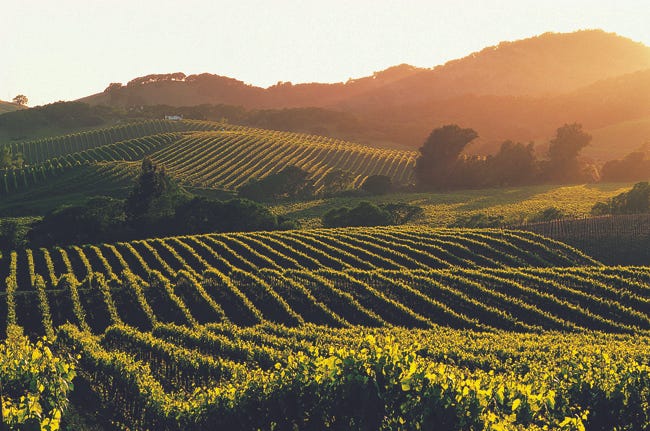Napa Valley gained it's fame 40 years ago at the "Judgement of Paris," where the best Californian wines first beat out France's top vintages at a blind taste test. While wine can be created from any grape, Napa Valley (and other great grape growing regions) has a very specific combination of elements (along with a great deal of knowledge, good yeasts, and skill) that creates such a superb wine.

One factor I'd like to learn more about are the soils all along the Great Valley area, and what makes these regions so incredible for growing grapes. The land itself and the unique composition can even be tasted through the wine, a feature that's called "terroir." Soil samples could certainly open my eyes to what creates the different flavors attributed to the land.
In addition to soil samples, "whole rock analysis" of the region would also be quite beneficial. As the researcher in the link found, certain "stratagraphic units were found to correlate with good wines." Knowing what these rocks were would give greater insight to why certain vineyards are consistently successful.
Lastly, climate data on the area would tell quite a lot about the quality of wine produced. Since yearly vintages are released, you can possibly correlate data from the Wine Spectator Point System and climate / geologic event data that could influence it.
No comments:
Post a Comment